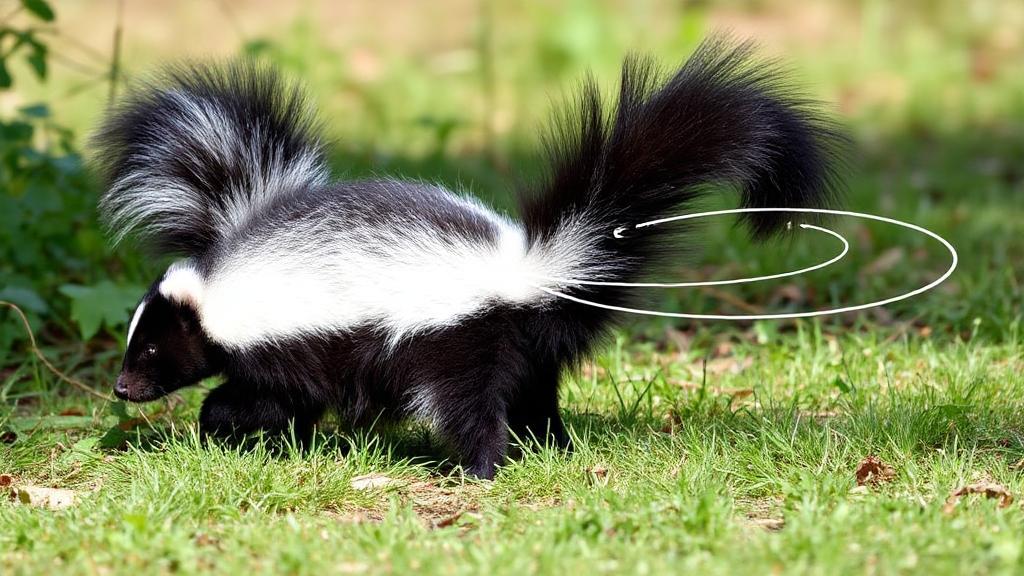The Anatomy of a Skunk's Defense
Skunks belong to the family Mephitidae, and their spray is a unique adaptation that has evolved to protect them from predators. The spray is produced by two specialized glands located near the skunk's anus, which can hold up to 15 cc of the oily liquid—enough for multiple sprays.
Chemical Composition
The spray primarily contains thiols, sulfur-containing compounds responsible for its strong odor. These chemicals are similar to those found in garlic and onions, but in much higher concentrations. The main components include:
- Trans-2-butene-1-thiol
- 3-methyl-1-butanethiol
- 2-quinolinemethanethiol
Spray Distance and Accuracy
A skunk can accurately spray its target from a distance of 10 to 15 feet (approximately 3 to 4.5 meters). While most effective shots occur within 6-10 feet, under optimal conditions, the spray can potentially reach up to 20 feet (about 6 meters). The spray emerges as a fine mist in a cone-shaped pattern, increasing the likelihood of hitting potential threats.
Factors Affecting Spray Distance
Several factors influence how far a skunk's spray can reach:
- Wind conditions
- Skunk's size and health
- Environmental temperature
- Skunk's position (elevation or slope)
- Spray volume
Impact Range
| Distance (feet) | Effect |
|---|---|
| 0-15 | Direct hit possible |
| 15-30 | Strong odor, possible irritation |
| 30-50 | Noticeable odor |
| 50+ | Faint odor possible |
Warning Signs
Before deploying their chemical defense, skunks typically display several warning behaviors:
"A skunk's warning display is like a traffic light system - giving clear signals before taking drastic action." - Dr. Jerry Dragoo, Skunk Researcher
- Stamping front feet
- Raising tail
- Turning body into U-shape
- Making short forward charges
Effects and Storage
- Skunks can store approximately 1-1.5 tablespoons of spray
- It takes 10-14 days to replenish their supply fully
- They can spray 5-6 times before running empty
The effects of skunk spray are not limited to its smell. It can cause temporary blindness and irritation if it gets into the eyes, and the odor can linger for days or even weeks.
Dealing with Skunk Spray
If you or your pet gets sprayed, here's an effective cleaning solution:
Important steps to follow:
- Avoid Water: Water can spread the oils and make the smell worse
- Use a Deodorizing Solution: Apply the mixture above to break down the thiols
- Ventilate: Open windows and use fans to disperse the odor
For more detailed instructions, visit the Humane Society's guide.
For more information about skunk behavior and biology, visit the National Wildlife Federation website.
